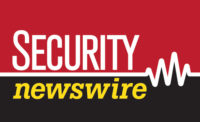Security News -- Transportation Security
TSA Mission Museum Features Grim 9/11 Artifacts

Some of the nation’s most evocative artifacts can now be found in a small museum in Arlington, Va.: a chunk of subway rail recovered from the New York City PATH station destroyed on 9/11, the metal detector that screened hijackers Mohamed Atta and Abdulaziz al-Omari early that morning at Maine’s Portland International jetport, reports USA Today. But only members of the Transportation Security Administration or those with a special invitation will be allowed to see the artifacts in person, the article says.
The museum – “Mission Hall” – is inside TSA headquarters. The exhibition space includes an interactive kiosk and a large, recessed exhibit case outside a multipurpose room on the first floor of the building in Pentagon City – a suburb of Washington, D.C. Only those who work in the building or are guests of the TSA can view it, USA Today reports.
The main goal of the project, according to TSA historian Michael Smith, is to share the history of the agency with the TSA workforce, which now includes more than 50,000 people at more than 400 airports around the country, the article says.
After being hired in 2010, Smith has been filming oral histories of current and past TSA employees, creating exhibits and organizing the growing cache of objects related to the agency’s history. In the USA Today article, he especially mentions the 13 original employees of the TSA from January 2002: “A lot of these people are friends of our project and had been holding onto documents, e-mails, coins, pins, you name it. Once they started donating those items to the project, the archives really started to come to life,” he says in the article.
Items in the TSA’s collection include images, oral histories, internal planning documents, a uniform and other objects relating to the first airport to get TSA screeners: Baltimore/Washington international Thurgood Marshall Airport, which was “federalized” on April 30, 2002, the article says.
The collection also includes limestone from the Pentagon’s exterior and mangled pieces of the World Trade Center, as is an example of the first handheld metal detectors used to screen airport passengers.
Looking for a reprint of this article?
From high-res PDFs to custom plaques, order your copy today!





